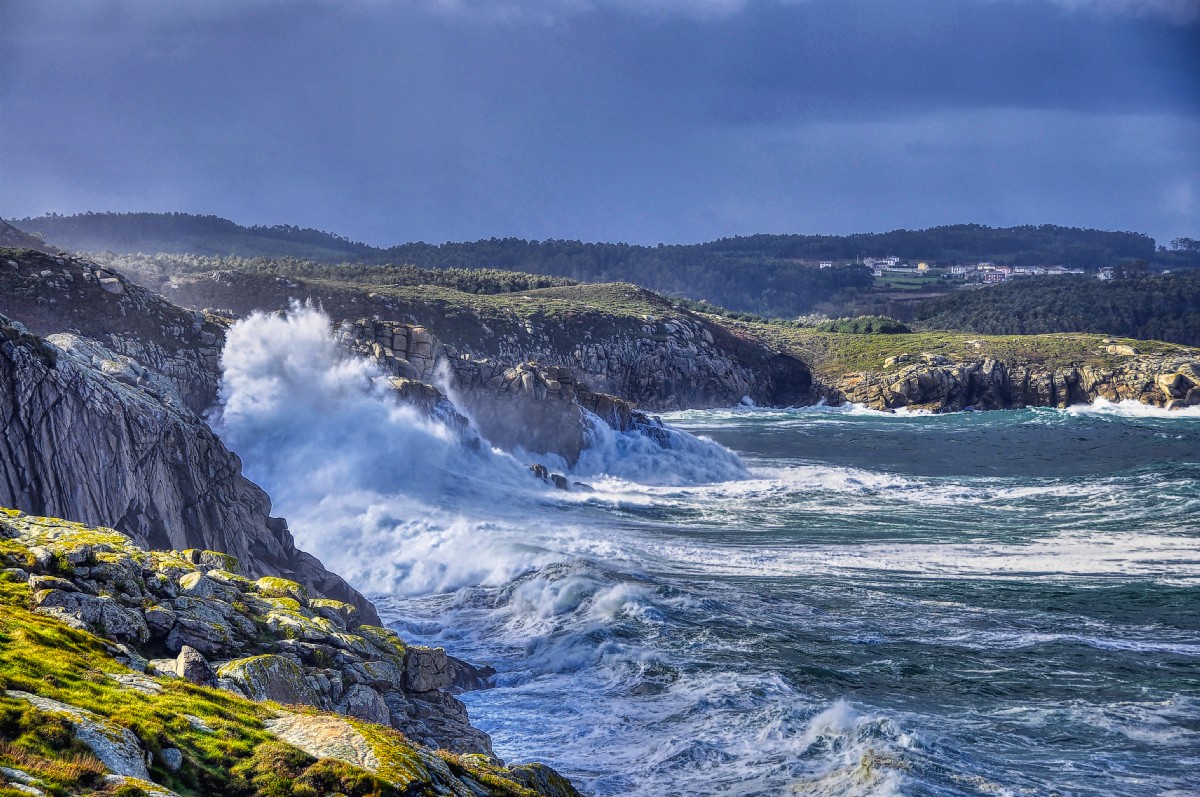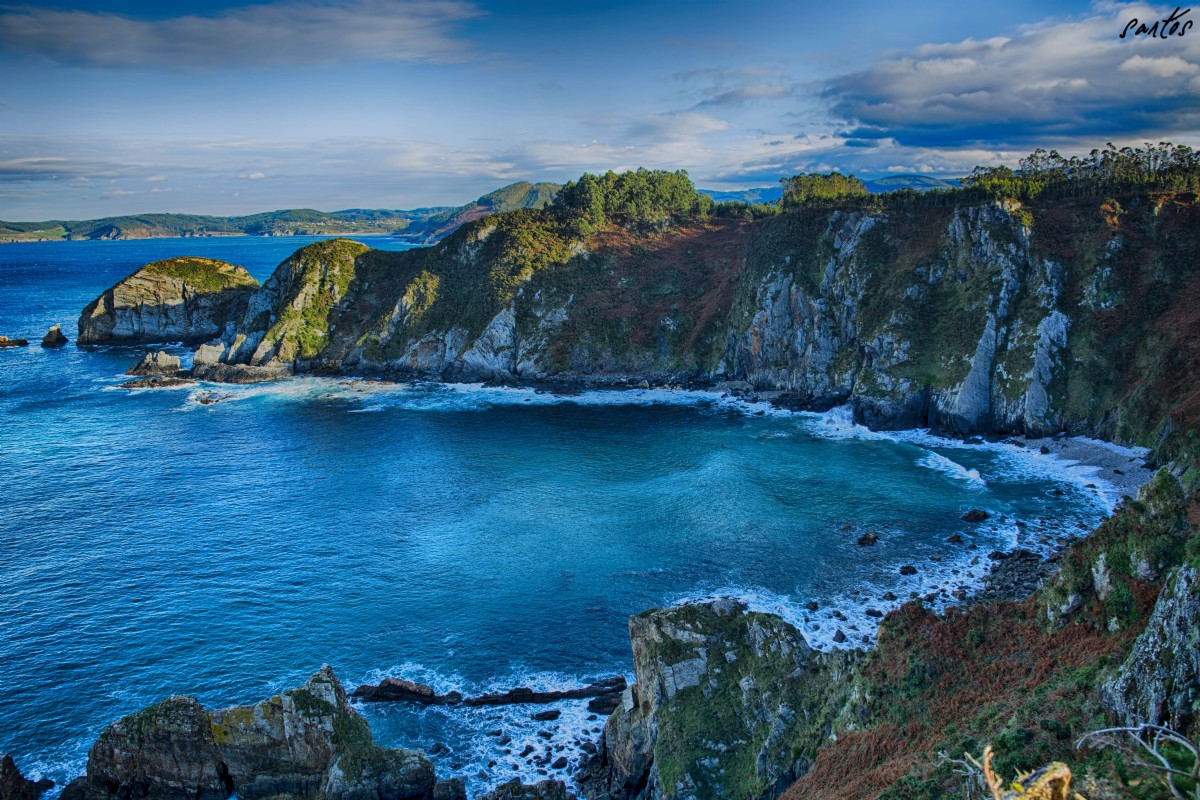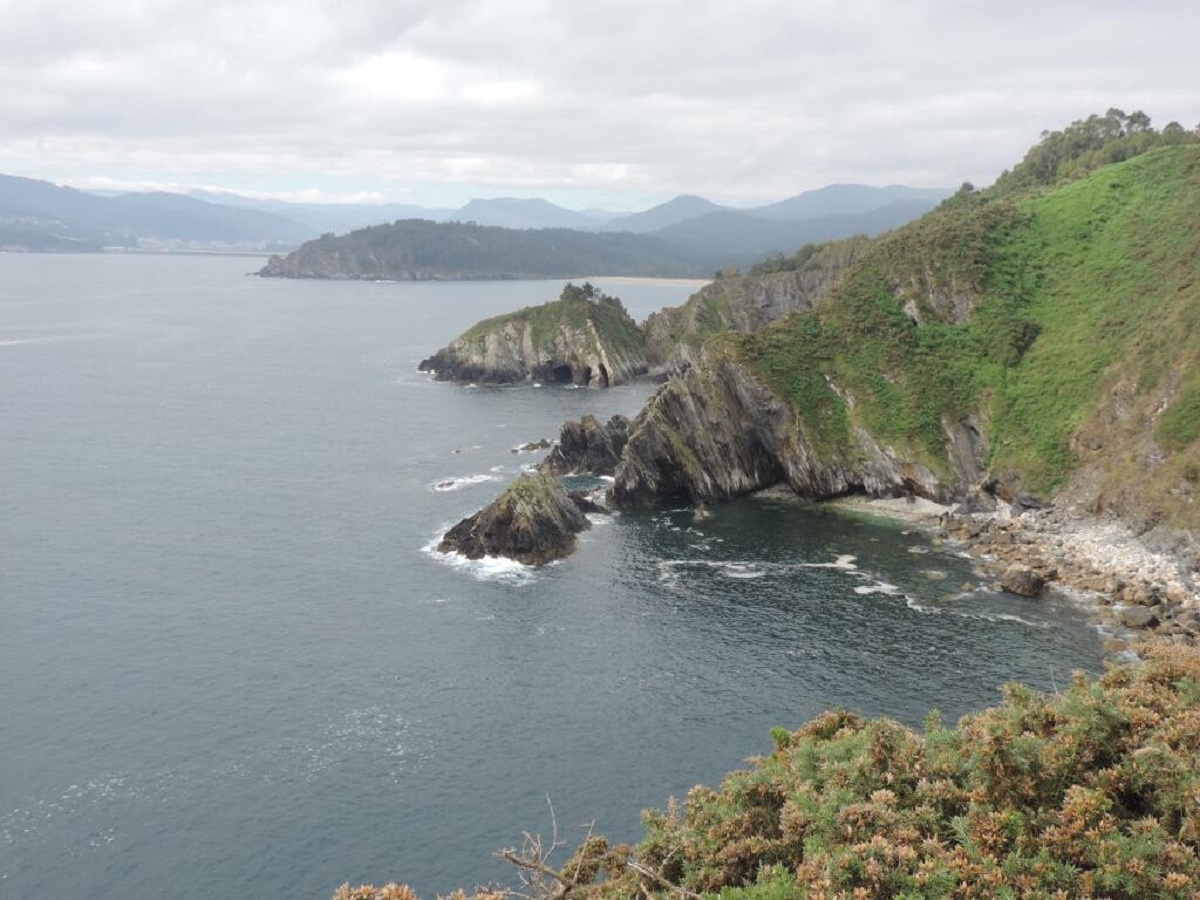
Northern Spain is damaged by the Cantabrian Sea. It is located near the European coast of the North Atlantic. It is also in charge of bathing the west coast of France. It has other names such as Bay of Biscay in English and in French as Golfe de Gascogne. It is an area of waters very rich in biodiversity and a source of fishing for the Spanish scene.
In this article we are going to tell you about all the characteristics, geology and biodiversity of the Cantabrian Sea.
Key features

It is a sea that has an extension of about 800 kilometers from Cape Ortegal located in Galicia, to Punta de Penmarch in French Brittany. Despite being a sea that is not too extensive in size, it does have a fairly pronounced maximum depth. And is that its depth Maximum Round 4.750 meters and is located in the Carrandi Trench, off the Asturian coast.
As we go towards the northernmost area near France, the Cantabrian Sea decreases in depth. It has an average salinity of about 35 grams per liter, although it is much lower near the coast. Especially at the mouth of quite large rivers such as the Garonne or the Loire in France, salinity decreases notably due to the supply of fresh water made by these rivers.
Given its smaller size, it is mostly affected by tides. Sometimes the tides reach amplitudes of 4.5 meters. The line that is traced along the entire coast is quite rectilinear. The only geographical features that can be highlighted in these areas are the Bay of Biscay, on the Franco-Spanish border, the Capes of Pañas, Ajo and Machichaco, as well as the bays of Santander, Arcachon or La Rochelle, among others.
It also bathes the coasts of the islands located in the French part. These islands are Oleron, Re, Yeu and others.
Ports of the Cantabrian Sea and climate

We are going to analyze which are the main ports of the Cantabrian Sea:
- Ports on the Spanish coast: These are the ports of Gijón, Santander and Bilbao. These three ports have maritime connections with both the south of England and the part of France.
- Ports on the coast of France: are the ports known by the names of Bayonne, Biarritz, Saint Jean de Luz and La Rochelle.
Along the Cantabrian coast there are several seaside resorts as well as some beaches that are highly valued by surfers. And it is that here there is a regime of winds that generates a strong wave perfect to go south.
We are now going to analyze the prevailing climate in the Cantabrian Sea areas. In winter in this area, storms known as gale and They are accompanied by heavy rains, winds and waves that reach 7 meters in altitude. It usually maintains moderate temperatures throughout the year. However, the surface water temperature ranges from 11 degrees in winter to 22 degrees in summer.
Biodiversity of the Cantabrian Sea
That the waters of this sea inhabit numerous animal species. It is quite famous for having many species of cetaceans. Among the best known species of cetaceans and in demand by the tourist public we find the Cuvier's Beaked Whale, very rare in European seas. Further, you can see some specimens of the North Atlantic Right Whale. This has a great tourist attraction, since it was full, it is a species that has almost disappeared from centuries of indiscriminate fishing by Basque whalers. There are numerous environmental impacts, not only from the fishing of these whales, but from the pollution of the waters and the destruction of natural habitats.
Other marine mammals that stand out in this sea are the fin whale, the sperm whale, the porpoise and some species of dolphins. On the eastern shore of the estuary we find a terrain where limestone rock predominates, being a very irregular karst that has numerous and more in the form of vaults. Each of these peaks are about 300-400 meters high, yesterday one of them is located the Hermitage of San Pedro de Atxarre.
One of the largest and best-preserved Holm oak groves of the entire Cantabrian coastline and the world develops on the limestone soil. It is a thick, old and well developed forest that is home to a large community of mammals. Given the density of vegetation, mammals can better protect and hide from threats.
Among the mammals that stand out in this forest we have the wild boar, the mink, the fox and the roe deer. Thanks to the dense forest it can provide them with a large number of acorns, strawberry trees and other food fruits and enough hiding places to protect themselves.
Beach
Finally, we are going to analyze which are the main beaches in the Cantabrian Sea.
- Laida Beach: It is the largest in a long time, but its size has been decreasing over time due to the loss of vegetation. An attempt was made to regenerate the dune, but it was swept away after a sea storm in the 50s.
- Laidaxu Beach: it is smaller in the former, to such an extent that when there are high tides it disappears completely. It is quite sheltered and it is very hot in summer in this area. Many take the opportunity to go to this beach before and after summer since it maintains a fairly pleasant temperature. However, the currents are exposed, so there are buoys to limit swimming.
- Larga Beach: it is one of the busiest by tourists. It is made up of Cape Ogoño which is formed by a limestone mass covered by the Cantabrian holm oak grove. It goes down to a height of 300 meters to the sea.
- San Antonio Beach: It is located inside the estuary and has several different areas. On the one hand we have the Sukarrieta beach and the artificial sand that was formed after a ballad and that is totally isolated but emerged at high tide. It is a somewhat dangerous beach due to the currents, but when it is low tide it allows walks to the marshes.
I hope that with this information you can learn more about the Cantabrian Sea and its characteristics.
